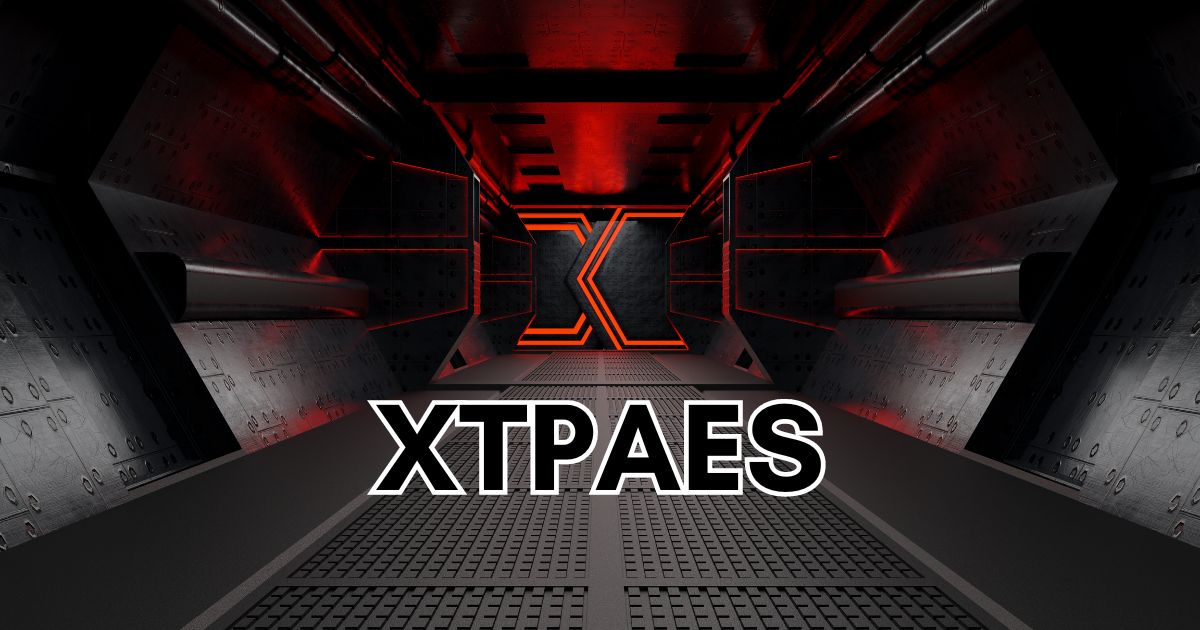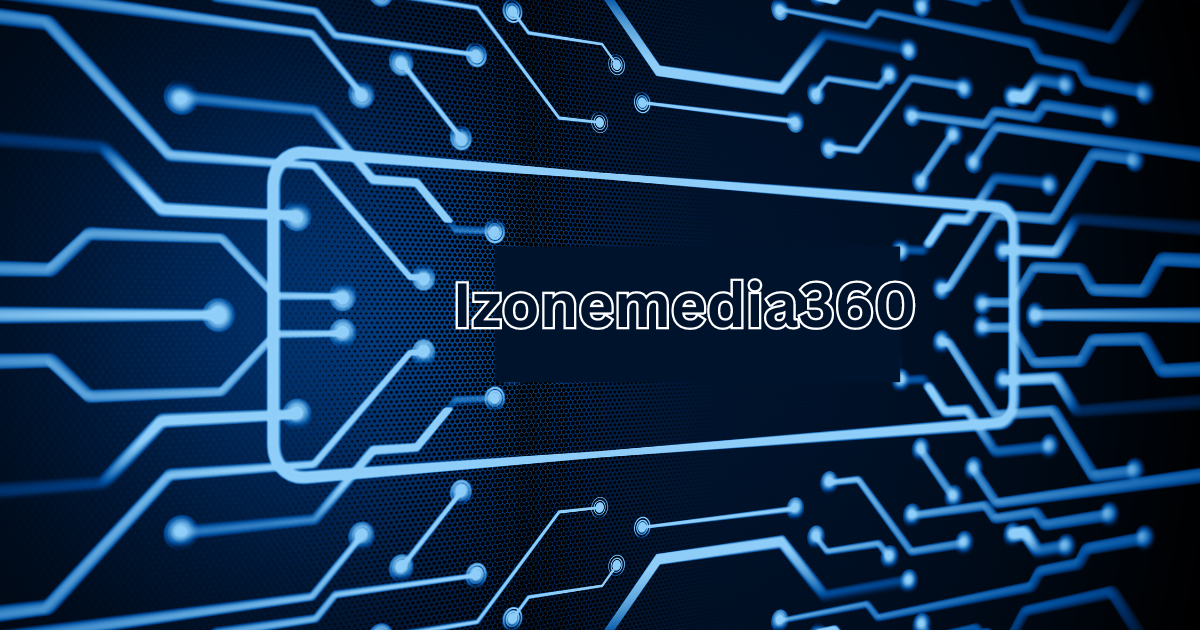In an era where digital security is paramount, the need for advanced encryption methods has never been more critical. XTPAES (Extended Transformational Protocol Advanced Encryption Standard) is at the forefront of this evolution, offering a revolutionary approach to safeguarding data. As cyber threats continue to grow in sophistication, XTPAES emerges as a game-changer in the world of digital security, providing enhanced protection for sensitive information across various platforms. But what exactly is XTPAES, and why is it gaining such prominence in the cybersecurity community? This article delves into the intricacies of XTPAES, exploring how it is reshaping the landscape of digital security.
Understanding XTPAES Technology
XTPAES is an advanced encryption technology designed to offer superior security features compared to traditional encryption methods. At its core, XTPAES builds upon the widely used AES (Advanced Encryption Standard) but introduces several enhancements that address the vulnerabilities and limitations of older systems. The technology leverages complex algorithms and transformational protocols to encrypt data more securely, making it nearly impossible for unauthorized parties to access or decipher the information. This makes XTPAES particularly valuable in sectors where data integrity and confidentiality are paramount, such as finance, healthcare, and government. By understanding the fundamental principles of XTPAES, organizations can better appreciate its role in modern digital security.
The Evolution of Encryption Methods
Encryption has a long history, evolving from simple ciphers used in ancient times to the sophisticated algorithms that protect our digital world today. Traditional methods, such as the Caesar cipher and substitution ciphers, laid the groundwork for modern encryption techniques. As technology advanced, so did the complexity of encryption, leading to the development of the Data Encryption Standard (DES) and eventually the AES. However, with the increasing frequency and sophistication of cyberattacks, even AES faced challenges in maintaining its effectiveness. This is where XTPAES comes into play. By building on the strengths of AES while addressing its weaknesses, XTPAES represents the next step in the evolution of encryption, providing a robust solution to the ever-growing threats in the digital landscape.
Key Components of XTPAES
The architecture of XTPAES is composed of several key components that work together to create a secure encryption environment. These include the encryption algorithm itself, which is designed to be more resistant to attacks, and the transformational protocols that enhance data protection. Additionally, XTPAES incorporates advanced key management techniques, ensuring that encryption keys are securely generated, stored, and transmitted. This multi-layered approach to security makes XTPAES highly effective in protecting data from a wide range of threats, including brute-force attacks, cryptanalysis, and insider threats. By understanding the components of XTPAES, organizations can gain insight into how this technology provides a comprehensive defense against modern cyber threats.
How XTPAES Works
XTPAES operates by encrypting data in a manner that is both secure and efficient. The process begins with the generation of a unique encryption key, which is then used to transform the data into an unreadable format. This encrypted data can only be decrypted by someone with the corresponding decryption key, ensuring that sensitive information remains protected. XTPAES also employs transformational protocols that add an extra layer of security, making it more difficult for attackers to crack the encryption. In practical terms, XTPAES can be applied to various forms of digital communication, including emails, file transfers, and online transactions, providing robust protection against data breaches.
XTPAES vs. AES: A Comparative Analysis
While AES has long been the standard for encryption, XTPAES offers several advantages that make it a superior choice in certain scenarios. One of the key differences between the two is the level of security provided. XTPAES introduces additional layers of protection that make it more resistant to attacks, particularly those involving cryptanalysis. Furthermore, XTPAES is designed to be more efficient, allowing for faster encryption and decryption processes without compromising security. This makes XTPAES particularly suitable for applications where both speed and security are critical. By comparing XTPAES with AES, it becomes clear that XTPAES offers significant improvements in terms of both security and performance.
Also Read: from VoicesofConservation.org Blog
Benefits of Implementing XTPAES
Implementing XTPAES offers numerous benefits for organizations looking to enhance their digital security. One of the most significant advantages is the enhanced data protection it provides. With its advanced encryption techniques, XTPAES makes it nearly impossible for unauthorized parties to access sensitive information, reducing the risk of data breaches. Additionally, XTPAES improves the efficiency of secure communications, allowing for faster data transmission without compromising security. This is particularly important for businesses that rely on real-time communication and data exchange. By adopting XTPAES, organizations can ensure that their data remains secure while also benefiting from improved performance and efficiency.
XTPAES in Cybersecurity
In the realm of cybersecurity, XTPAES plays a crucial role in protecting against a wide range of threats. As cyberattacks become more sophisticated, traditional encryption methods are often insufficient to prevent data breaches and other security incidents. XTPAES, with its advanced encryption algorithms and transformational protocols, provides a higher level of protection, making it an essential tool in modern cybersecurity strategies. Whether it’s safeguarding sensitive information, securing online transactions, or protecting against malware and ransomware, XTPAES offers a comprehensive solution that addresses the complex challenges of today’s digital landscape.
XTPAES and Data Privacy
Data privacy is a growing concern for organizations and individuals alike, especially in the wake of numerous high-profile data breaches. XTPAES addresses these concerns by providing robust encryption that ensures sensitive information remains confidential. By encrypting data in a way that is both secure and efficient, XTPAES helps organizations comply with data privacy regulations, such as the General Data Protection Regulation (GDPR) and the California Consumer Privacy Act (CCPA). These regulations require organizations to take appropriate measures to protect personal data, and XTPAES offers a reliable solution that meets these requirements. With XTPAES, organizations can safeguard their data while also demonstrating their commitment to protecting the privacy of their customers.
XTPAES for Enterprises
Enterprises, in particular, stand to benefit significantly from implementing XTPAES. In today’s digital economy, businesses rely heavily on the secure exchange of information, whether it’s financial data, intellectual property, or customer records. XTPAES provides the level of security needed to protect this information from cyber threats, ensuring that businesses can operate with confidence. Moreover, XTPAES is designed to integrate seamlessly with existing enterprise systems, making it easier for organizations to adopt this technology without disrupting their operations. By choosing XTPAES, enterprises can enhance their security posture while also benefiting from the scalability and flexibility that this technology offers.
Challenges in Adopting XTPAES
Despite its many advantages, adopting XTPAES is not without its challenges. One of the primary obstacles is the complexity of the technology, which can make it difficult for organizations to implement and manage. This is particularly true for smaller businesses that may lack the resources and expertise needed to deploy XTPAES effectively. Additionally, there may be compatibility issues with existing systems, requiring significant investment in time and resources to integrate XTPAES successfully. However, these challenges can be mitigated through careful planning and the use of expert guidance, ensuring that organizations can reap the full benefits of XTPAES while minimizing potential drawbacks.
XTPAES and Regulatory Compliance
Regulatory compliance is a critical consideration for organizations in today’s digital landscape, and XTPAES can play a key role in meeting these requirements. Many data protection regulations mandate the use of encryption to safeguard personal information, and XTPAES provides a robust solution that satisfies these criteria. For example, the GDPR requires organizations to implement appropriate technical measures to protect personal data, and XTPAES meets this requirement by offering advanced encryption that ensures data remains secure. By adopting XTPAES, organizations can not only protect their data but also demonstrate their compliance with regulatory standards, reducing the risk of penalties and reputational damage.
The Future of XTPAES
As technology continues to evolve, so too does the landscape of digital security. XTPAES represents the future of encryption, offering a solution that is both secure and adaptable to the changing demands of the digital world. Looking ahead, we can expect to see further developments in XTPAES technology, including enhancements to its encryption algorithms and the introduction of new features that improve its performance and usability. These advancements will ensure that XTPAES remains at the forefront of digital security, providing organizations with the tools they need to protect their data in an increasingly complex and interconnected world.
Integrating XTPAES with Existing Systems
For organizations looking to adopt XTPAES, integration with existing systems is a critical consideration. Fortunately, XTPAES is designed to be compatible with a wide range of platforms, making it easier for organizations to implement this technology without disrupting their operations. However, successful integration requires careful planning and the use of best practices to ensure that XTPAES is implemented effectively. This includes conducting a thorough assessment of existing systems, identifying potential compatibility issues, and working with experts to develop a comprehensive integration plan. By taking these steps, organizations can ensure a smooth transition to XTPAES, allowing them to benefit from enhanced security without compromising their existing infrastructure.
XTPAES in the Cloud
As more organizations move their operations to the cloud, securing cloud environments has become a top priority. XTPAES offers a powerful solution for cloud security, providing advanced encryption that protects data both at rest and in transit. By implementing XTPAES in the cloud, organizations can ensure that their sensitive information remains secure, even in the event of a data breach. Moreover, XTPAES is designed to work seamlessly with cloud platforms, making it easier for organizations to integrate this technology into their existing cloud infrastructure. Whether it’s protecting customer data, securing financial transactions, or safeguarding intellectual property, XTPAES provides the level of security needed to operate with confidence in the cloud.
Case Studies: Success Stories with XTPAES
Numerous organizations have successfully implemented XTPAES, demonstrating the effectiveness of this technology in real-world scenarios. For example, a financial institution that adopted XTPAES was able to significantly reduce the risk of data breaches, protecting its customers’ sensitive information from cyber threats. Similarly, a healthcare provider used XTPAES to secure patient records, ensuring compliance with data privacy regulations while also improving the efficiency of its operations. These success stories highlight the tangible benefits of XTPAES, showcasing how this technology can be used to enhance security and protect against the ever-growing threat of cyberattacks.
XTPAES and Mobile Security
As mobile devices become increasingly prevalent, securing these devices has become a critical component of digital security. XTPAES offers a powerful solution for mobile security, providing advanced encryption that protects data on mobile devices from a wide range of threats. Whether it’s safeguarding sensitive information stored on a smartphone, securing mobile transactions, or protecting against malware and other forms of cyberattacks, XTPAES provides the level of security needed to protect mobile devices in today’s digital world. By adopting XTPAES, organizations can ensure that their mobile devices remain secure, even as cyber threats continue to evolve.
Comparing XTPAES with Other Encryption Technologies
While there are many encryption technologies available, XTPAES stands out for its unique combination of security, efficiency, and flexibility. Compared to traditional encryption methods, such as DES and RSA, XTPAES offers superior protection against a wide range of threats, making it an ideal choice for organizations that require a high level of security. Additionally, XTPAES is designed to be more efficient, allowing for faster encryption and decryption processes without compromising security. This makes XTPAES particularly suitable for applications where both speed and security are critical, such as online transactions and real-time communication. By comparing XTPAES with other encryption technologies, it becomes clear that XTPAES offers significant advantages that make it a superior choice for modern digital security.
Expert Opinions on XTPAES
Cybersecurity experts agree that XTPAES represents a significant advancement in the field of digital security. According to leading experts, the advanced encryption algorithms and transformational protocols used by XTPAES make it one of the most secure encryption technologies available today. Additionally, experts highlight the efficiency and flexibility of XTPAES, noting that it is well-suited to a wide range of applications, from securing online transactions to protecting sensitive information in the cloud. As cyber threats continue to evolve, experts predict that XTPAES will play an increasingly important role in digital security, providing organizations with the tools they need to protect their data and stay ahead of emerging threats.
Conclusion
XTPAES is revolutionizing digital security by providing a powerful and versatile solution that addresses the complex challenges of today’s digital landscape. With its advanced encryption algorithms, transformational protocols, and compatibility with a wide range of platforms, XTPAES offers a comprehensive solution that meets the security needs of organizations across various sectors. By adopting XTPAES, organizations can enhance their security posture, protect sensitive information, and comply with data privacy regulations, ensuring that they remain secure in an increasingly interconnected and digital world. As technology continues to evolve, XTPAES will undoubtedly play a crucial role in shaping the future of digital security, providing organizations with the tools they need to protect their data and stay ahead of emerging threats.









